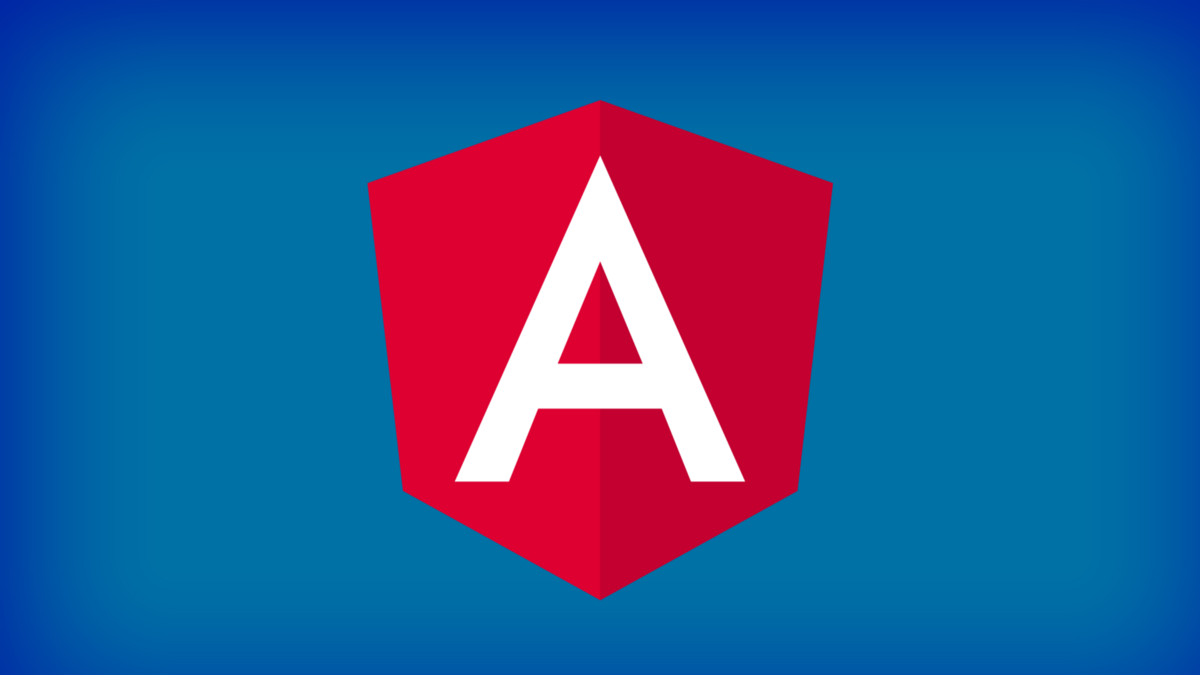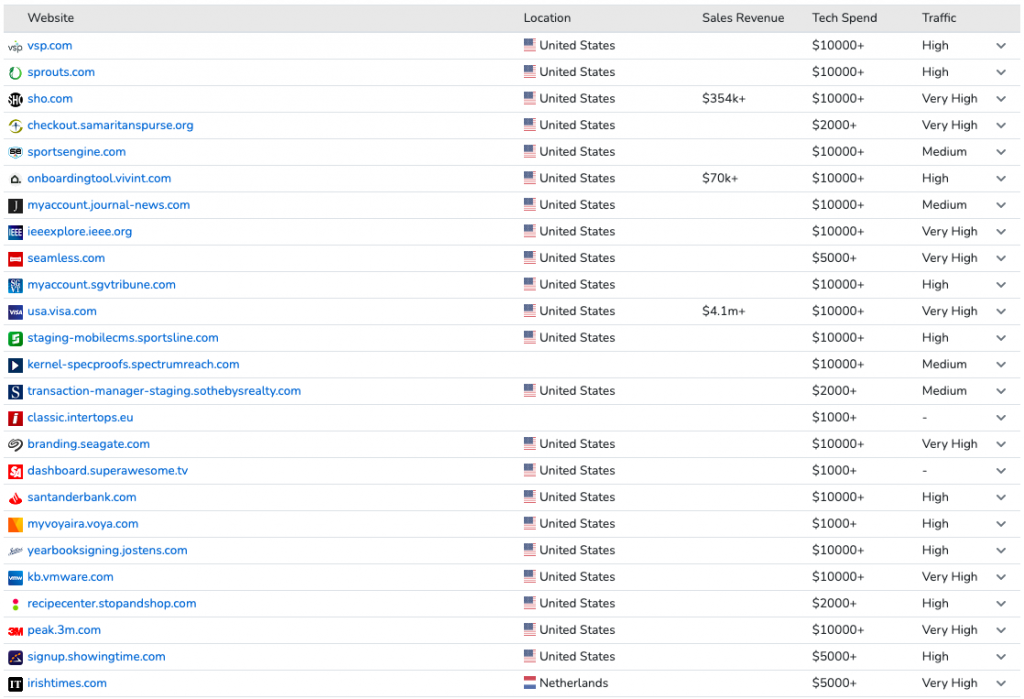High-Load Websites and Applications Built with Angular

Angular has come a long way since it was first launched in 2009. One of the top choices for developing feature-rich applications, the powerful framework provides broad functionality, fast application development, and mature methodology. Trusted to handle high loads, Angular is the framework of choice for market leaders like Google, Paypal, and Forbes.
The global community of developers is fond of Angular, and for good reason. This Google-supported framework has actually revolutionized front-end development in terms of performance. Choosing Angular for your project is a sure-fire way to release high-performance web products.
Then again, popular doesn’t mean easy-to-work-with. Angular requires decent engineering knowledge and is usually the number one choice for large and complex projects, compared to other JavaScript frameworks.
But don’t worry. Having years of experience with Angular.js and its succeeding versions, SECL Group built dozens of projects with this framework, including enterprise-grade ones. Let’s take a look at global companies that share our fascination with Angular and the websites they built using it.
High-Load Websites and Applications Developed Using Angular
Gmail
Google incorporated Angular into Gmail in 2009, turning it into a single-page app that provides uninterrupted experience. Unlike multi-page websites, single-page Gmail can render data on the front end and allows for offline access to cached data.
The most commonly used email service in the world, Gmail%20has%20come%20a%20long,of%20Google's%20G%20Suite%20lineup." target="_blank" rel="nofollow noopener noreferrer">Gmail has more than 1.5 billion users—a testament to the power of Angular. You can trust this framework to support a huge user-oriented app.
Why Angular?
- Simple interface
- Seamless user experience
- Initial load of up to several seconds, after which emails and tabs can be opened without delay
- Once loaded, Gmail content remains available offline
- The out-of-the-box Angular module enables the integration of Google Hangouts into Angular apps
Average monthly visits: 73.60M (according to SimilarWeb)
Back-end technologies: C++, Java
Front-end technologies: Angular
Database technologies: Cloud Bigtable
Forbes
With such a vast number of global visitors and 74 million monthly visitors in the US alone, Forbes needs a framework that can deliver a feature-rich web app with minimal footprint for fast delivery over the network. Angular has proven to be up to the job.
The Forbes website offers a responsive user experience and fast load time. Its articles and stories self-update within seconds of publication. The site looks great, too. One look at the Forbes author pages, and you’ll know the Angular framework would make a great primary tool for developing your own app.
Why Angular?
- Because of Angular’s reusable codebase, the site performs well on any device or browser
- Readers enjoy the uninterrupted experience with articles appearing organically as they scroll down the website
- Support and maintenance made simple
- Immense opportunities for growth and improvement
Average monthly visits: 101.58M
Back-end technologies: Java
Front-end technologies: Angular
Database technologies: MongoDB
Upwork
Upwork uses Angular to provide a responsive single-page experience for its users. The framework accounts for intuitive design and remarkable functionality. With 12 million registered freelancers, seven million registered clients, and more than 100,000 job postings, Upwork has grown to become the world’s largest freelance marketplace.
Why Angular?
- Seamless navigation and easy interaction between employers and freelancers
- Third-party integrations
- Easy integration with payment gateways for transferring funds
Average monthly visits: 35.97M
Back-end technologies: PHP and Java
Front-end technologies: Angular
Database technologies: Amazon DynamoDB, Amazon RDS
Paypal
With Angular’s help, it’s easy to make quick money transfers in Paypal. With 377 million active users, Paypal supports massive amounts of transactions between individuals and businesses at any given time.
Why Angular?
- People and businesses can authorize a transaction with a few clicks
- Seamless completion of the checkout processes without leaving the web store
- Readily available information and tutorials on integrating Paypal into Angular websites
Average monthly visits: 516.45M
Back-end technologies: PayPal was rebuilt from Java to Node.js
Front-end technologies: Angular
Database technologies: Oracle, MySQL, PayPal’s internally-designed HERA
JetBlue
The JetBlue website allows passengers to book and track flights, pay for tickets, view road maps, and explore destinations. The airline boarded 42 million passengers in 2019. Needless to say, the site needs a powerful framework to handle high loads and provide a seamless user experience.
Why Angular?
- Easy-to-use Search Flights and Booking features to find the best fares
- Third-party integrations for car rentals and accommodation bookings
Average monthly visits: 7.68M
Back-end technologies: .NET
Front-end technologies: Angular
YouTube TV
An alternative to traditional AT&T TV, the Angular-powered YouTube TV is accessible on most television brands. It also works with smart televisions like LG and Samsung. The number of YouTube TV subscribers has ballooned to 3.4 million in the second quarter of 2020.
Offering limitless storage capacity, YouTube TV lets you record as many programs as you want all at the same time. You can also keep the recordings for nine months.
Why Angular?
- Advanced tools to build a cross-platform app
- Accessible without the need for several decoders
- Can be delivered easily to products of existing TV brands
Average monthly visits: 110.70K
Front-end technologies: Angular
Standard Bank
The 156-year-old Standard Bank has grown to be the largest bank in Africa with 12 million customers. One way they’re providing a stellar customer experience is through a mobile banking application. Compatible with smartphones, tablets, and laptops, the banking app offers fast and secure access to bank services.
With just a few clicks, account holders can pay bills, check their balance, transfer money, make a deposit, and monitor their bank account.
Why Angular?
- Manage or make changes on a bank account in seconds
- A wide range of applications, from websites to mobile apps
- Works with almost all devices
Average monthly visits: from 109.75K to 4.01M, depending on the domain
Back-end technologies: Java, PHP
Front-end technologies: Angular
Database technologies: Apache Derby, Azure SQL Database
Wikiwand
If you’re like most people, you may find Wikipedia’s interface cluttered and hard to navigate. Wikiwand was created to give a quick fix to these design and usability issues. Simply install the app on your browser, and enjoy an enhanced Wikipedia experience. With a monthly user base of 10 million, Wikiwand has grown to become the world’s leading Wikipedia reader.
Why Angular?
- Webpages are divided into simple sections for improved readability
- Advanced navigation functionality on both web and mobile apps
- A newer version of Wiki that attracts higher traffic
Average monthly visits: 23M
Back-end technologies: Node.js
Front-end technologies: Angular
Other projects built with Angular
The list does not end there. The Angular framework is also used to build Google Cloud Platform, AdWords, HBO’s mobile version, Sony’s RS3 YouTube app, Indiegogo website, BMWs Find a Dealer and Driveaway Price Calculator, Xbox Live, Telegram, CrunchBase, and many other websites and applications.
Here’s a quick list of the websites that use Angular:

Offered with a wide range of features, Angular has high out-of-the-box usability. It provides ready-made components that allow teams to scale projects quickly and easily. With TypeScript flagging the most common errors during development, the burden of debugging is greatly reduced. It’s no wonder more and more developers and companies are choosing Angular.
Will Angular fit in my new project?
Consider using the Angular framework for the following types of products:
- Enterprise systems
- Web services, especially the ones featuring personal accounts
- Single-page web applications
- E-commerce stores and marketplaces experience
Angular comes with its set of benefits, so once you decide on using it, you’ll get:
- Fast code writing
- Cleaner code
- Code reusability
- Seamless updates
- Quick testing of specific parts of the application
- Two-way data binding that instantly reflects state changes in the user interface
- High performance
- Simple templates
- Good Google indexing
As far as the disadvantages of Angular go, it inherited the indexing issue that’s actually typical for most JavaScript frameworks. We’re talking about the so-called partial indexing or two-waves of indexing. The problem is that not all search engine crawlers can process JavaScript code successfully or immediately.
That’s why web developers use rendering solutions, and our particular recommendation would be SSR (server-side rendering). SECL Group’s engineers apply this approach to every Angular project for rapid indexing and a fast load of the initial page.
The bottom line
We truly believe that Angular has become a blue-chip technology for enterprise platforms when high performance and speed make a difference. Sure, nobody’s perfect, but Angular came really close. Even its indexing issues can be easily solved by the engineers who’ve learned the ropes on multiple Angular projects. Like the ones, we at SECL Group have on our web development teams.
Creating Angular-based solutions is one of SECL Group’s main offerings. We can boast a large team of JavaScript specialists that have delivered numerous sophisticated, enterprise-grade projects using Angular. The clients appreciate working with us thanks to our engineers’ ability to tackle various challenges.
Whether you’re working on a startup or an enterprise project, our experienced developers can help you out. So don’t hesitate to join our roster of esteemed clients that include Kia Motors, Danone, and The Lego Group. Contact us for more information.


Related publications


